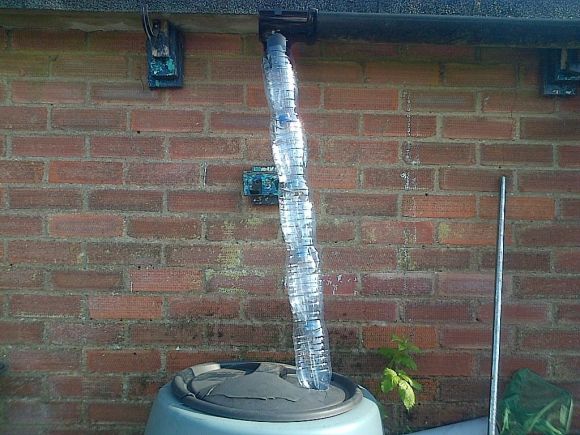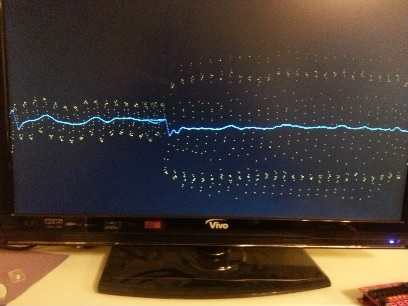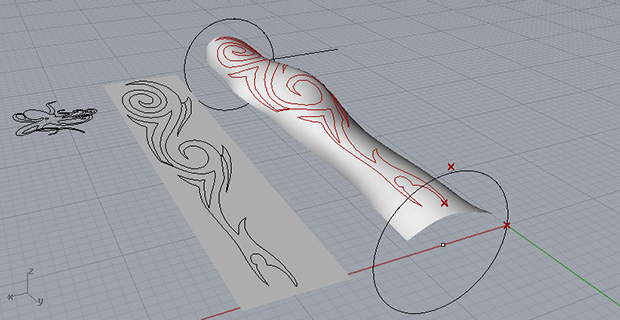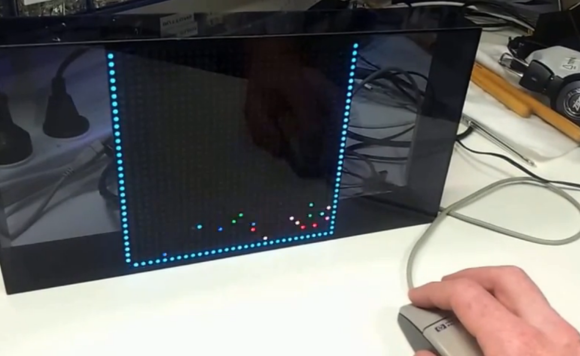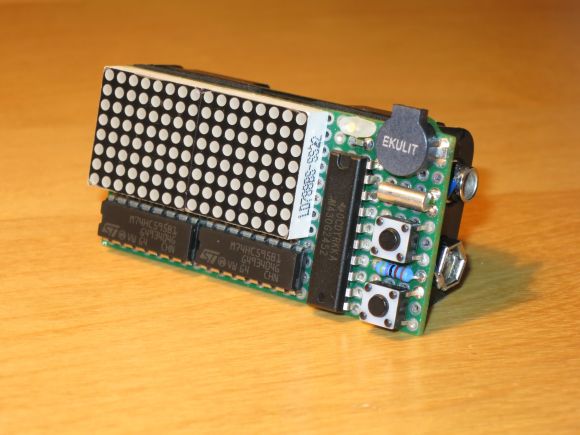
[Markus] turn his breadboard LED matrix tinkering into an alarm clock which wakes him each morning.
Don’t be fooled by how clean his assembly work is. That’s not a fabbed PCB, it’s a hunk of green protoboard which a lot of point-to-point soldering on the back side. It’s driven by the MSP430 G2452 which is oriented vertically in this image. The two horizonal ICs are 595 shift registers which drive the LED modules.
We already mentioned the cleanliness of his assembly, but there’s one other really cool design element. On the back of the unit is what looks like a battery holder for two AA cells. He’s using just one Lithium Iron Phosphate battery (3.2V) which is in the upper of the two cavities. This let him cut the lower part of the holder at an angle to act as a stand for the clock.
Don’t miss the video which walks us through the user interface. It has what you’d expect from an alarm clock. But there is a really bright white LED which mimics a sunrise clock and it does more than just buzz one note when the thing goes off.

